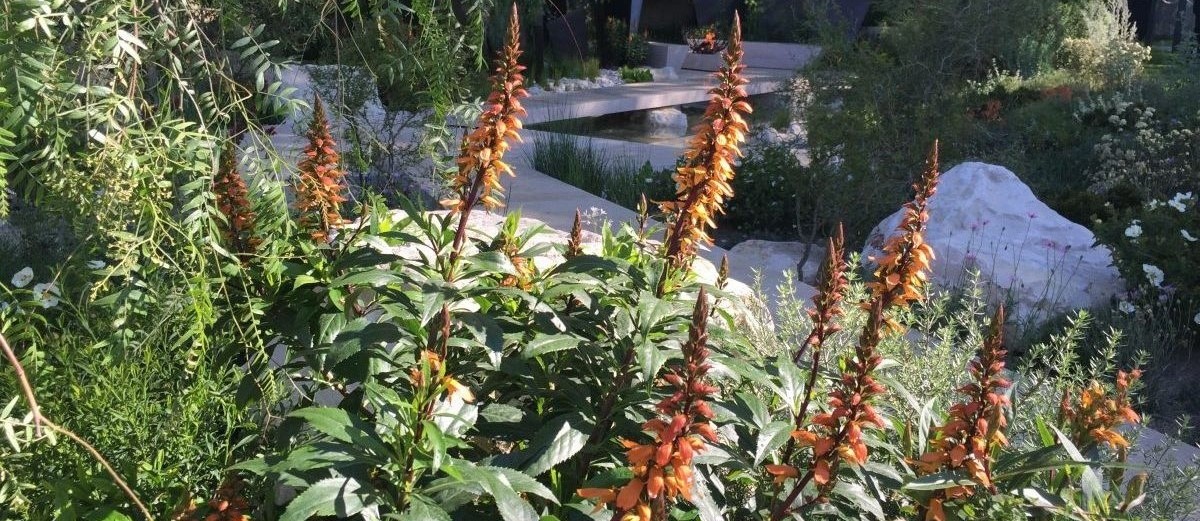
Isoplexis, also known as the Canary Island foxglove, is a stunning flowering plant that has captured the attention of plant enthusiasts around the world. Native to the Canary Islands, this unique plant boasts a plethora of astonishing facts that make it a true botanical wonder. From its vibrant trumpet-shaped flowers to its ability to attract pollinators, Isoplexis is a fascinating plant that deserves closer inspection. In this article, we will explore 18 astonishing facts about Isoplexis, shedding light on its history, characteristics, and ecological importance. So, whether you’re an avid gardener or simply interested in the wonders of the natural world, get ready to dive into the captivating world of Isoplexis!
Key Takeaways:
- Isoplexis, also known as foxgloves, are stunning flowering plants native to the Mediterranean region. They attract pollinators, require well-drained soil, and can reach up to 4 feet in height.
- Isoplexis plants, with their vibrant orange flowers, are a favorite among pollinators and beneficial insects. They can be grown in gardens to create a beautiful and harmonious ecosystem while adding visual interest to the surroundings.
Isoplexis is a genus of flowering plants.
Isoplexis is a genus of beautiful flowering plants that belong to the family Plantaginaceae. These plants are commonly known as foxgloves and are native to the Mediterranean region.
There are approximately 11 species of Isoplexis.
Within the Isoplexis genus, there are around 11 known species of plants. Each species exhibits unique characteristics and beauty, making them a fascinating subject for plant enthusiasts.
Isoplexis flowers are typically orange in color.
One of the distinguishing features of Isoplexis plants is their striking orange-colored flowers. These vibrant hues add a pop of color to gardens and attract pollinators like bees and butterflies.
Isoplexis is commonly grown as an ornamental plant.
Due to their attractive flowers and foliage, Isoplexis species are widely cultivated as ornamental plants in gardens and landscapes. Their unique appearance adds visual interest and enhances the overall aesthetic appeal of the surroundings.
Isoplexis plants require well-drained soil.
These plants thrive in well-drained soil that is rich in organic matter. Proper soil conditions provide the necessary nutrients for healthy growth and flowering.
Isoplexis is a popular choice for pollinator gardens.
With their bright and showy flowers, Isoplexis plants are a favorite among pollinators. By planting these species in your garden, you can attract a variety of beneficial insects and help support local ecosystems.
Isoplexis flowers have a tubular shape.
The flowers of Isoplexis plants are known for their tubular shape. This distinctive shape is adapted to facilitate pollination, as certain insects can easily access the nectar deep within the flower.
Isoplexis plants are biennial.
Isoplexis species follow a biennial growth cycle, meaning they complete their life cycle over two years. The first year is spent establishing foliage, while flowering occurs in the second year.
Isoplexis plants prefer full sun to partial shade.
To thrive and produce abundant blooms, Isoplexis plants require ample sunlight. However, they can tolerate some shade, especially during the hottest parts of the day.
Isoplexis is commonly used in traditional medicine.
Throughout history, various Isoplexis species have been used in traditional medicine for their potential therapeutic properties. However, it’s important to note that the medicinal uses of these plants should be approached with caution and under proper guidance.
Isoplexis plants can reach a height of up to 4 feet.
Depending on the species and growing conditions, Isoplexis plants can vary in size. On average, they can reach a height of up to 4 feet, creating an impressive display of flowers in the garden.
Isoplexis is closely related to the genus Digitalis.
Isoplexis and Digitalis are part of the same family, Plantaginaceae, and share similar characteristics. Both genera are renowned for their stunning flowers and are often cultivated side by side.
Isoplexis flowers attract hummingbirds.
The showy flowers of Isoplexis serve as a magnet for hummingbirds. These tiny birds are attracted to the nectar-rich blooms, making Isoplexis an excellent choice for hummingbird gardens.
Isoplexis plants can self-seed.
After the flowering period, Isoplexis plants produce seed pods containing numerous seeds. These pods eventually open, allowing the seeds to scatter and potentially germinate, leading to new plant growth.
Isoplexis is native to the Canary Islands.
Although Isoplexis is now cultivated in various parts of the world, its natural habitat is primarily the Canary Islands. Here, it thrives in the favorable climate and contributes to the region’s unique biodiversity.
Isoplexis requires regular watering.
To keep Isoplexis plants healthy and flourishing, it is important to provide them with regular watering. They prefer moist soil but should not be overwatered, as excessive moisture can lead to root rot.
Propagating Isoplexis can be done through seeds or cuttings.
If you wish to propagate Isoplexis, you can either collect and sow the seeds or take stem cuttings. Both methods have their advantages, and with proper care, you can successfully establish new plants.
Isoplexis plants can attract beneficial insects.
Isoplexis flowers are not only attractive to pollinators but also to other beneficial insects such as ladybugs and lacewings. These insects help control pest populations in the garden, creating a harmonious ecosystem.
Conclusion
Isoplexis, also known as the Canary Island foxglove, is a fascinating plant with many astonishing facts. From its vibrant orange flowers to its impressive medicinal properties, Isoplexis has captured the interest of botanists and plant enthusiasts around the world. Whether you’re looking to add some beauty to your garden or want to learn more about the incredible capabilities of this plant, Isoplexis is definitely worth exploring. With its unique characteristics and intriguing history, it’s no wonder that Isoplexis continues to captivate and inspire. So next time you come across this stunning plant, take a moment to appreciate its beauty and the wonders it holds.
FAQs
1. What is Isoplexis?
Isoplexis, scientifically known as Isoplexis canariensis, is a species of flowering plant native to the Canary Islands. It belongs to the foxglove family and is known for its bright orange trumpet-shaped flowers.
2. How tall does Isoplexis grow?
Isoplexis can grow up to 3 feet in height, making it a striking addition to any garden or landscape. Its upright form and beautiful flowers make it a visually appealing plant.
3. Does Isoplexis require special care?
Isoplexis is a relatively low-maintenance plant. It thrives in well-draining soil and prefers partial shade to full sun. Regular watering and occasional fertilizing can help ensure healthy growth.
4. Can Isoplexis be grown in containers?
Yes, Isoplexis can be grown in containers, making it a versatile plant for various gardening spaces. Just make sure the container has proper drainage and the plant receives adequate sunlight and water.
5. Are there any medicinal uses of Isoplexis?
Yes, Isoplexis has been used in traditional medicine for its potential medicinal properties. It contains compounds that may have anti-inflammatory and antioxidant effects, although further research is needed to fully understand its therapeutic potential.
6. Can Isoplexis be propagated from seeds?
Yes, Isoplexis can be propagated from seeds. The seeds should be sown in a well-draining potting mix and kept moist until germination occurs. It’s important to note that Isoplexis seeds may take some time to germinate and require patience.
7. Is Isoplexis a good choice for attracting pollinators?
Yes, Isoplexis is known to attract pollinators, such as bees and butterflies, with its vibrant flowers. Planting it in your garden can help support the local ecosystem and promote pollination.
Isoplexis plants are fascinating, but there's so much more to explore in the world of plants and nature. Dive into the wonders of biodiversity and discover how it shapes our planet. Uncover the secrets of pollination and its crucial role in sustaining life. And for those with a green thumb, delve into the art and science of horticulture to cultivate your own thriving garden. Each topic offers a captivating journey filled with surprises and insights that will leave you in awe of the natural world around us.
Was this page helpful?
Our commitment to delivering trustworthy and engaging content is at the heart of what we do. Each fact on our site is contributed by real users like you, bringing a wealth of diverse insights and information. To ensure the highest standards of accuracy and reliability, our dedicated editors meticulously review each submission. This process guarantees that the facts we share are not only fascinating but also credible. Trust in our commitment to quality and authenticity as you explore and learn with us.


